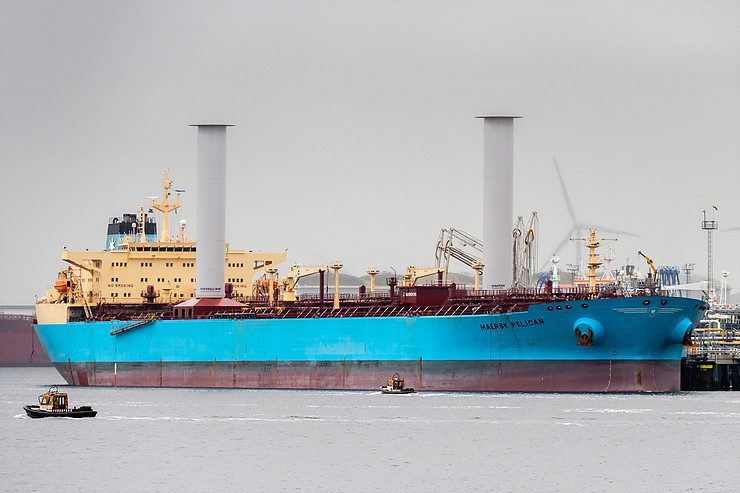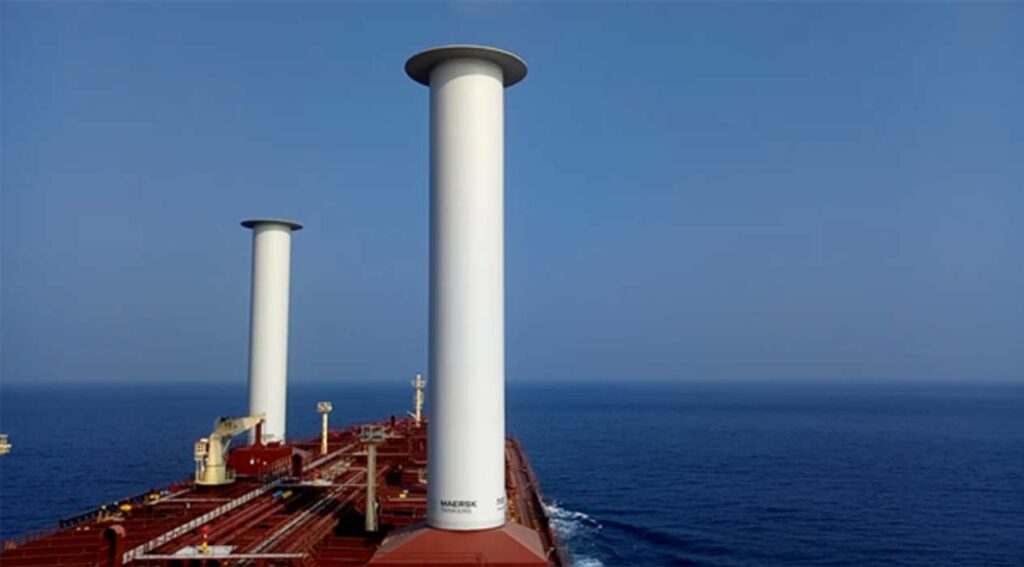Inspenet, June 11, 2023
A joint study looking at the operating efficiency of Norsepower ‘s Rotor Sails found significant fuel savings when combined with an optimal weather route.
For the study, Norsepower worked with leading expert in maritime software and data services, NAPA, and Sumitomo Heavy Industries Marine & Engineering (SHI-ME), one of the world’s leading shipyards. The companies announce the results of the first phase of the project that explores the fuel savings and emissions reduction potential of a combination of Norsepower’s Rotor Sail solution and NAPA Voyage Optimization on one of SHI-ME’s ships.
Norsepower Rotor Sails are a modernized version of the Flettner rotor that use the magnus effect to generate forward thrust, reducing overall fuel consumption and associated greenhouse gas emissions. The technology has been used in multiple sectors of the shipping industry for over eight years and has 250,000 running hours of verified performance data, revealing fuel consumption savings of between 5 and 25%.

Study shows that the combination of Norsepower rotor sails and optimal weather routing can reduce CO2 emissions by 28%
The initial phase of the simulation project, conducted between December 2022 and March 2023, revealed that the integration of NAPA Voyage Optimization with Norsepower Rotor Sail could achieve an average emission reduction of 28% on the Atlantic route from New York to Amsterdam. NAPA Voyage Optimization contributed approximately 12% to these CO 2 emission savings.
The project used NAPA’s ship performance model, voyage simulation tools, and real-world performance data from Norsepower. Leveraging 2022 now-now weather data and specifications provided by Norsepower and SHI-ME, NAPA’s digital twins simulated tanker performance in selected sea areas.
The study focused on annual voyages on six popular trade routes, evaluating the estimated CO 2 reduction and potential fuel savings of tankers using NAPA Voyage Optimization and Norsepower Rotor Sails, compared to using NAPA Voyage Optimization alone. .
Across the six routes, the study identified an average CO 2 reduction of 19% when combining NAPA Voyage Optimization with Norsepower Rotor Sails, with NAPA Voyage Optimization accounting for 10% of the emission reductions. The simulation also examined the prediction of the ship’s performance during the design stage, testing the ship’s capabilities under variable weather and sea conditions.

The second phase of the research project, which began in May, aims to extend the initial findings and optimize the performance of the vessel with Norsepower Rotor Sails using fleet data. Advanced performance analysis will be performed to improve operational efficiency and explore new optimization strategies. SHI-ME intends to develop a new proof of concept for wind-assisted ships equipped with Norsepower Rotor Sails as part of this project.
The project’s findings will help strengthen the business case for investing in wind assist technology, particularly as the industry faces increasing pressure to decarbonise. Leveraging NAPA’s operational voyage simulation technology, combined with technical expertise from Norsepower and SHI-ME, the collaborative study provides crucial information and informed decision support, including during the design stage.
“This joint simulation project shows the significant potential of combining wind propulsion with voyage optimization to make a positive impact on the planet,” said Pekka Pakkanen, executive vice president of NAPA Shipping Solutions. “At a time when the industry is scrambling to comply with environmental regulations, digital solutions enable greater collaboration with stakeholders across the entire maritime value chain.”
Jukka Kuuskoski, Director of Sales for Norsepower, emphasized the importance of clean technologies in addressing fuel economy and environmental concerns. “This performance data on the benefits of adopting clean technologies will give the industry the confidence to invest in decarbonization,” Kuuskoski said.
The ongoing project and its findings offer valuable insights for the maritime industry as it strives to align with sustainability goals.
Photos: Norsepower/Sea Cargo/Maersk
Don’t miss the Inspenet News at: https://inspenet.com/en/inspenet-tv/











